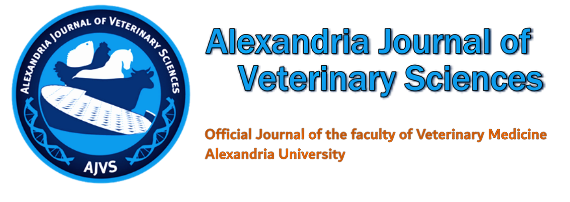
| Original Article | ||||||||||||||||||||||||||||||
AJVS. 2018; 59(2): 98-102 Microbiological Assessment of Canned Meat Products with Molecular Detection of Clostridium Perfringens Toxins Hossam A. Ali, Hani M. Abo Yousef, Mai M. Amer.
| ||||||||||||||||||||||||||||||
| How to Cite this Article |
| Pubmed Style Ali HA, Yousef HMA, Amer MM. Microbiological Assessment of Canned Meat Products with Molecular Detection of Clostridium Perfringens Toxins. AJVS. 2018; 59(2): 98-102. doi:10.5455/ajvs.302642218 Web Style Ali HA, Yousef HMA, Amer MM. Microbiological Assessment of Canned Meat Products with Molecular Detection of Clostridium Perfringens Toxins. https://www.alexjvs.com/?mno=302642218 [Access: May 04, 2025]. doi:10.5455/ajvs.302642218 AMA (American Medical Association) Style Ali HA, Yousef HMA, Amer MM. Microbiological Assessment of Canned Meat Products with Molecular Detection of Clostridium Perfringens Toxins. AJVS. 2018; 59(2): 98-102. doi:10.5455/ajvs.302642218 Vancouver/ICMJE Style Ali HA, Yousef HMA, Amer MM. Microbiological Assessment of Canned Meat Products with Molecular Detection of Clostridium Perfringens Toxins. AJVS. (2018), [cited May 04, 2025]; 59(2): 98-102. doi:10.5455/ajvs.302642218 Harvard Style Ali, H. A., Yousef, . H. M. A. & Amer, . M. M. (2018) Microbiological Assessment of Canned Meat Products with Molecular Detection of Clostridium Perfringens Toxins. AJVS, 59 (2), 98-102. doi:10.5455/ajvs.302642218 Turabian Style Ali, Hossam A., Hani M. Abo Yousef, and Mai M. Amer. 2018. Microbiological Assessment of Canned Meat Products with Molecular Detection of Clostridium Perfringens Toxins. Alexandria Journal of Veterinary Sciences, 59 (2), 98-102. doi:10.5455/ajvs.302642218 Chicago Style Ali, Hossam A., Hani M. Abo Yousef, and Mai M. Amer. "Microbiological Assessment of Canned Meat Products with Molecular Detection of Clostridium Perfringens Toxins." Alexandria Journal of Veterinary Sciences 59 (2018), 98-102. doi:10.5455/ajvs.302642218 MLA (The Modern Language Association) Style Ali, Hossam A., Hani M. Abo Yousef, and Mai M. Amer. "Microbiological Assessment of Canned Meat Products with Molecular Detection of Clostridium Perfringens Toxins." Alexandria Journal of Veterinary Sciences 59.2 (2018), 98-102. Print. doi:10.5455/ajvs.302642218 APA (American Psychological Association) Style Ali, H. A., Yousef, . H. M. A. & Amer, . M. M. (2018) Microbiological Assessment of Canned Meat Products with Molecular Detection of Clostridium Perfringens Toxins. Alexandria Journal of Veterinary Sciences, 59 (2), 98-102. doi:10.5455/ajvs.302642218 |








